Update May 4th, 2022:
After many customer feedback about our CMOS-Optimized Narrowband filters, we learned that it is necessary to finetune our current f/2 Highspeed filters into two filter categories of Ultra-Highspeed filters for f/2 (working range <f/2.3) and – NEW – f/3 (working range f/2.3 to f/3.4). Further Information about this as well as a detailed whitepaper can be found in our Blogpost Preshift and further Information concerning Baader CMOS-Filters.
Update October 1st: New LRGB-Filters have been added to the line of CMOS-optimized Baader Filters. The post below has been modified to reflect these changes.
"Finding the way" has a long tradition at Baader Planetarium. The slogan got created by our companies founder Claus Baader – in 1966, when "the Baader Planetarium-Orrery" was announced to the world. And within those many years we always tried to find ways for our technical solutions – and the domes – to stand the test of time. The Baader Planetarium Orrery btw. might have the longest product existence in modern industry – we still produce it here in house – unchanged since 1966 (if you like, check a tiny bit of the print material published at that time).
Today we have a similar situation – we worked hard for two years and the "feeling" here is just like way back then. For our new filters:
WE FOUND THE WAY
... to finally and cost-effectively tackle the problem of filters being accused of creating unbearable halos when put into close vincinity of correcting lenses – in conjunction with latest generation CMOS-chips. Hence we introduce our four new families of Baader (Ultra) Narrowband / Highspeed filters:
- 6,5 nm Narrowband Filters, CMOS-optimized – for > f/3.4
- 3,5 / 4 nm Ultra-Narrowband Filters, CMOS-optimized – for > f/3.4
- 6,5 nm f/2 Highspeed Filters, CMOS-optimized – for ≤ f/3.4
- NEW: 3,5 / 4 nm f/3 Ultra-Highspeed Filters, CMOS-optimized – for f/2.3 to f/3.4
- CHANGED: 3,5 / 4 nm f/2 Ultra-Highspeed Filters, CMOS-optimized – for < f/2.3 (previously f/3.4 to f/1.8)
 Update October 1st: As well as our new CMOS-optimized LRGB Filters
Update October 1st: As well as our new CMOS-optimized LRGB Filters
- RGB-R (595 – 690 nm) Bandpass Filter
- RGB-G (490 – 580 nm) Bandpass Filter
- RGB-B (400 – 510 nm) Bandpass Filter
- UV/IR-Cut / L-Filter (420 – 685 nm)
All these new filters are designated as CMOS-optimized, with the same high quality and engineering you expect from the Baader family of products.
This very problem had almost got us "over the edge". For more than a decade, during the reign of CCD-cameras, our Baader Narrowband-filters had served somewhat as an industry-standard in astro-filter technology. And "all of a sudden", with always newer and revolutionary CMOS-chips hitting the market, people started to complain about halos, whenever a coma-corrector, field-flattener or reducer-corrector would be placed in close vincinity to one of our filters. We studied far and wide and for some time took some soothing from the fact that amateur forums around the world had similar reports for our much higher priced competitors. However, some solution to this just had to be found – but without just have filter prices skyrocketing as was the case everywhere. As a consequence we looked into latest advanced coating technologies and how to use it in ways to address this most severe problem, since nowadays almost any telescope would use such auxillary-optics closely in front of the chip-plane.
Eventually, with significant investment in R&D, we ran from one prototype run into the next for almost all of the years from 2019 until now (middle of 2021). Countless nights were spent under the stars to evaluate so many different coating systems on all new filter families.
However, after much heartship we are absolutely convinced that our new Reflex-Blocker™ coating systems are addressing this severe problem in a very satisfying fashion, with just a moderate increase in price. You will be the judge.
This new generation of Baader CMOS-filters features:
- Increased contrast, matched for typical CMOS quantum efficiency and s/n ratio
- Reflex-Blocker™ coatings, for largest ever freedom from halos, even under most adverse conditions concerning aux-optics
- (Ultra) Narrowband/Highspeed: Ever more narrow passbands
- (Ultra) Narrowband/Highspeed: FWHM on each filter category carefully designed to allow for 1:1:1 exposures
- Identical filter thickness to existing standards, with utmost care for parfocality
- Blackened edges all around, with filter-lead-side-indicator in the form of a telescope-sided black outer rim, to additionally eliminate any reflection due to light falling onto the edge of a filter
- Each filter coated individually, with sealed coating edge (NOT cut out of a larger plate with coatings left exposed, read more)
- Life-Coat™: evermore hard coatings to enable a non-aging coating for life – even in a most adverse environment
Don´t be misled.
These all new CMOS-optimized filters work magnificently with all existing digital camera technologies, be it CMOS or CCD. However – an owner of CCD-camera-technology will still find our previous, extremely affordable, narrowband filter technology to be fully apt for excellent imaging. But: "the Better always is enemy to the Good".
We are most confident, anyone using latest CMOS-technology will see the improvement right away – for his/her lifetime! This new CMOS-optimized filter generation is meant to stay and become the new standard in the amateur-word of imagers.
In the future...
Similarly designed Photometric Filters (featuring identical standard thickness alike all our filters as well as all standard sizes) are under preparation for the science world in the form of SLOAN/SDSS and modern BVR (Bessel-conform) filters – likewise using our Reflex-Blocker coating technology, to be fully suitable for 24/7 operation.
Images results and test reviews
UPDATE: Testers of regular production series filters
Markice Stephenson
The Celestron RASA 8 and the Baader High-Speed Ultra-Narrowband filters are a perfect match.
I’ve noticed a couple of things off the bat about these new filters:
1. The narrow bandpasses contributed to stronger and cleaner signal and helped maximize the time under heavily light polluted skies. In only ~4 hours, I was able to pick up the upper tail / H-alpha filaments on the Eastern Veil Nebula that I simply wasn’t able to pick up on any other attempt of this target.
NGC 6960 OIII - 34x120s exposures for a total of 1hr 8mins, -10C, 120 Gain; Equipment - RASA 8” Telescope and ZWO 294MM Pro Camera, August 6th, 2021
© Markice Stephenson2. That there were no profound halos. 52Cyg is a decently bright star near NGC 6960 and the new Baader H-alpha and [O III] filter handled it well. I didn't see any reflections of my cable router in the images or anything that would warrant further inspection. I should disclose that my sole test of the [O III] filter was on NGC 6960, as I was only slewing to H-alpha objects in Cygnus to avoid switching filters on the RASA. As I began one night on [O III], my luck in clear nights ran out. I intend to test this filter further, but the initial results are incredible.
During the week of imaging, however, I was able to gather over 20 hours total of these 6 Ha images: Butterfly Nebula (IC 1318), Western Veil (NGC 6960), Eastern Veil (NGC 6992), North America Nebula Crop of Cygnus Wall (NGC 7000), The Tulip Nebula (Sh2-101), and The Crescent Nebula (NGC 6888). The shortest of the fully integrated images being the North America Nebula, which was only 1 hour and 18 minutes. The longest of the bunch being the Eastern Veil, which was 5 hours and 8 Minutes.

NGC 6960 H-alpha - 100x120s exposures for a total of 3hr 20mins, -10C, 120 Gain; Equipment - RASA 8” Telescope and ZWO 294MM Pro Camera, July 31st & Aug. 2nd 21
© Markice Stephenson

NGC 6888 H-Alpha - 115x120s exposures for a total of 3h 50mins, -10C, 120 Gain; Equipment - RASA 8” Telescope and ZWO 294MM Pro Camera, August 1st, 2021
© Markice Stephenson

NGC 6992 H-alpha 154x120s exposures for a total of 5h 8mins, -10C, 120 Gain; Equipment - RASA 8” Telescope and ZWO 294MM Pro Camera, August 3rd, 2021
© Markice Stephenson

Sh2-101 H-alpha - 129x120s exposures for a total of 4h 18mins, -10C, 120 Gain; Equipment - RASA 8” Telescope and ZWO 294MM Pro Camera, August 4th, 2021
© Markice Stephenson

NGC 7000 H-alpha - 39x120s exposures for a total of 1hour 18 minutes, -10C, 120 Gain; Equipment - RASA 8” Telescope and ZWO 294MM Pro Camera, August 5th, 2021
© Markice Stephenson
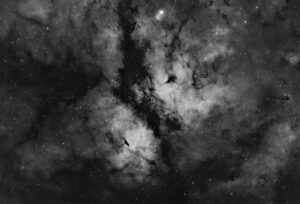
IC 1318 H-alpha - 122x120s exposures for a total of 4hours 4mins, -10C, 120 Gain; Equipment - RASA 8” Telescope and ZWO 294MM Pro Camera, August 5th 2021

NGC 6960 Ha/OIII/OIII - 134x120s exposures for a total of 4hr 28mins, -10C, 120 Gain, Equipment - RASA 8” Telescope and ZWO 294MM Pro Camera
© Markice Stephenson
Final Thoughts: Coming from the original Baader F/2 images, I expected the filters to perform well. To produce these quality and quantity of images in only ~20 hours, again, shows the power of these newer filters. I fully endorse them for anyone with fast optics, especially if they are seeking to maximize their time under light polluted skies. Ultimately, the performance met my expectations and I can’t wait to put together more full color images!
Chris Hendren (Technical Support Manager at Celestron Torrance/CA)
Recently, I lucked out and had clear skies until at least 2 AM for 3 nights in a row from my Bortle 9 back yard sky in overwhelmingly-bright Long Beach, California. That let me test out the new Baader 6.5nm CMOS-optimized high-speed filters with the RASA 8 under very tough conditions. Except for the bright magnitude 2.2 star Sadr (Gamma Cygni) in OIII and a much lesser extent in SII, there were no haloes to be seen on any stars with 5 min exposures at f/2.0. I was able to easily minimize the halo to a level I felt comfortable with in a couple steps in Photoshop. I am extremely happy with this result.
Chris Hendren, www.hendrenimaging.net
Image Specs:
Celestron RASA 8-optics and CGX-mount, ZWO ASI2600MM-P, Baader 6.5nm CMOS optimized High Speed Ha, SII, and OIII filters. 38x5 min SII, 35x5 min Ha, 37x5 min OIII at -10 C (550 min total exposure) HaSHO aquired in NINA and processed in Deep Sky Stacker, PixInsight, StarNet++, and Photoshop CC.
UPDATE: I tried the Baader 6.5nm High Speed HA filter with an f/4.5 TPO Ultrawide (Askar FMA180 clone) scope just to satisfy my curiosity on how slower scopes worked with the high-speed filter. I binned 2x2 to compensate for the reduced signal and then shot 46 x 2 min exposures unguided near Gamma Cygni. ~72% QE at H-alpha with the ZWO ASI2600MM-P certainly helped. I will likely have a lot more trouble with SII and OIII at the slower f/ratio, but this experiment worked pretty well.
No calibration frames. Processed in DSS, PixInsight, and Photoshop CC.
New images 30th August 2021:
I had two good nights this last weekend, so I decided to try an HOO narrowband combination on IC 1396 as I had no sulfur data. The green channel is actually 25% HA and 75% OIII, while HA is mapped to Red and OIII to blue. This was a nice way to get a “close to RGB color” narrowband image from my Bortle 9 skies with a bright moon up. Celestron CGX and RASA 8, ZWO ASI2600MM-P, the above mentioned Baader filters. 130 min HA and 160 min OIII (5 min subs) at -10C, acquired in NINA. Processed in DSS, PixInsight, and Photoshop CC.
Prototype Testers
Andreas Bringmann
One of our first testers is Andreas Bringmann, owner of a 2.6m Baader Classic Dome and renowned Astro-Photographer – see his images on www.astrobin.com/users/equinoxx/. The all new f/2 Ultra-Highspeed Filters not only lead to amazing images but even enabled the photographic proof of the newly discovered planetary nebula StDr13, check out the detailed test review.
I would like to emphasize, that the opportunity you have given me to test the new CMOS-optimized filters has been for me, an astro-amateur, like winning the lottery!
Andreas Bringmann, www.astrobin.com/equinoxx/

NEW DISCOVERY - Strottner-Drechsler 13, taken with Baader H-alpha Highspeed Filter
© Andreas Bringmann

Sh2-232 & friends, taken with Baader H-alpha, S-II and O-III ULTRA-Highspeed Filters
© Andreas Bringmann

Ou4 an Sh2.129, taken with Baader H-alpha and O-III ULTRA-Highspeed Filter
© Andreas Bringmann

Sh2-308, taken with Baader H-alpha and O-III ULTRA-Highspeed Filters
© Andreas Bringmann
Now Mr. Bringmann had the opportunity to test the new CMOS optimized Baader 5.5nm H-Beta filters:
First of all, I would like to thank you very much for allowing me to test the new Baader filters and I can report that the new CMOS-optimized 5.5nm H-beta filter works photographically perfectly even at f/1.9!
Andreas Bringmann, www.astrobin.com/equinoxx/
The new CMOS-optimized 5.5nm H-beta filter was compared against the old 8.5nm H-beta filter from 2014, which was in Mr. Bringmann's possession.
Read the entire test report by Mr Bringmann here
Christoph Kaltseis
after almost 1.5 years of constant tests of always new prototype runs of Baader filters in four different filter categories, I do conclude that the outcome superseeds my expectations, especially considering the prices.
Christoph Kaltseis, www.cedic.at

M31 (SuW Astro-Poster with full story), taken with Baader H-alpha and O-III ULTRA Highspeed Filters
© Christoph Kaltseis
Julian Shroff
After initial testing, I was pleased to find that the new CMOS-optimized Baader filters with reflex blocker coating work great. With the much narrower passages, there is hardly any light pollution, but plenty of signal and contrast. There are also no halos or reflections, even with very bright stars, which I have never seen before on f/2.
I used the freshly arrived highspeed filters for a quick snapshot of NGC7000 with my RASA 8. The image consists of 5x120s O III and 15x120s Ha, so a 40 minutes bicolor image. This definitely shows what can be done with a fast system and good filters. I don't like to expose less than 10h, but with such bright nebulae I would be done after 4-5h.
Julian Shroff, Instagram, Youtube
Also a quick first test with the highspeed H-alpha filter on Deneb with 30s, as well as 60s shots shows the difference clearly in my eyes. There is much less unwanted light coming through and also the slight halo, which is present with other filters I have used so far, has completely disappeared even with an extreme stretch.
Last night (03.May 2021) it was clear for a short time. I have now also made a few 30s and 60s exposures of Deneb with the O III filter. On the 30s images the image looks perfect, on the 60s there is a very faint halo - at maximum stretch. Considering that with other O III filters I used to have halos on virtually every even remotely bright star, I find this very satisfying.
Ian Aiken
Our british customer has been testing our new CMOS-optimized filters in combination with a QHY 268M camera (read more about that here).
I'm very impressed with the Baader UNBs and managed to get some H-alpha data under Bortle 7 skies with my new CMOS camera. Having used previous Baader high speed filters on my RASA 11, I can confirm that these are a step forward in conjunction with the RASA optical configuration, that is putting so many lenses very near in front of the filter. These new UNBs definitely are improving contrast with the RASA and helping me to keep stars under much tighter control. The UNB-OIII filter likewise has improved considerably with the Frontside Reflex-Blocker technology, with no halos recorded in this images data (unfortunately due to the weather the data is incomplete to make a pretty bi-colour picture).
Ian Aiken











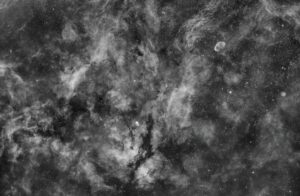

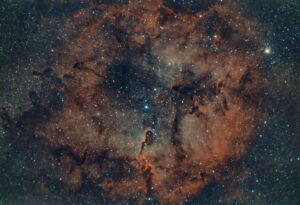
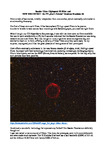










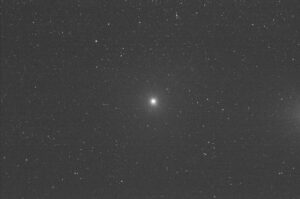

















Very interesting, just wish they had been released before I bought the current Ultra NB's.
When will they be available in UK and what will be the price for the 36 mm unmounted and the 2" ?
Steve
Thank you kindly for your interest in our upcoming new CMOS-optimized filter family.
We plan to announce availability and prices of these filters by beginning of June. Preorders are not (yet) possible.
Please sign up for our newsletter to be among the first to get informed about these new filters:
www.baader-planetarium.com/en/newsletter
This is great news! When do you expect these new filters to be available?
Thank you kindly for your interest in our upcoming new CMOS-optimized filter family.
We plan to announce availability and prices of these filters by beginning of June. Preorders are not (yet) possible.
Please sign up for our newsletter to be among the first to get informed about these new filters:
www.baader-planetarium.com/en/newsletter
The images posted by Andreas Bringmann on Astrobin are some of the best on there. I was about to order a set of Chroma 3nm filters but will now wait for these to be released.
I am extremely excited!!! Any news on the ship date and price?
We will announce prices and shipping dates of the new CMOS-optimized Baader filters on next friday, June 11th.
Believe us, we are excited too :)
I can't wait. Just take my money already :). I've beed waiting for a 36mm NB set for so long now.
Good luck with the sales and reserve me one set!
These look quite interesting (and affordable). Waiting for reviews and tests before I take the plunge.
Would these work with a Maksutov scope at f/12 and f/15?
Or I should turn to an SCT or refractor scope?
N.F.
Highspeed filters are designed to work with every telescope from f/3,4 to f/1,8 and the Ultra Narrowband from f/10 to f/3,5.
We do not recommend these two new filter series for telescopes with longer focal length.
You should use the broader Narrowband filters (6,5nm - 8nm) for your MAK telescopes
Hello,
I pre-ordered my set, I am going extremely excited. Do you have an exact date on when they will ship?
Thanks,
Danny
We started shipping to our dealers last week. They are available on our website as of today!
I have a TeleVue NP127is telescope f/5.2 and QHYCCD QHY600M camera. I've planned to change filters to CMOS optimized and also I would like to buy in future Tele Vue 0.8 reduces which will change focal ratio to f/4.0. In my place the 'lightpollutionmap' said the pollution level is 0.2. I don't know which configuration will be better the Narrow Band Filters 6,5nm or the Ultra Narrow Band 4,0 (3,5) nm for for f/10 to f/3.5? Currently I am using standard narrow band filters Baader Ha 7,5nm / SII 8nm, OII 8,5nm.
If the standard Narrowband filters did a good job for you so far, there should be no need to upgrade them to Ultra-Narrowbands. The light pollution level is low enough.
Thank you. I have one more question, I have QHYCCD QHYCFW3L filter wheel which supported 2" filters in cell and 50mm unmounted filters. I know that unmounted filters will be better, the 50.4mm filters working well with this filter wheel?
The 50,4mm filters work very well with this filterwheel and are in fact our recommended filter size for this filterwheel out of two reasons:
1. The mechanical way that the filters are fixed in the filterwheel carousel, is better suited for 50,4mm unmounted filters.
2. The 50,4mm filters have a big enough diameter that allows the usage of larger format cameras as the 2". This means that in the near future (taking into account the fast rythm in the development of CMOS cameras and how affordable big sized sensors are becoming), upgrading your camera to one with a bigger sensor, you won't need to suffer from vignetting or change the filters as well
If I raplace my current 2" HSO to modern CMOS optimized version I need also replace LRGB filters too? Do you planned release new CMOS optimized LRGB in future?
At the moment, we have converted 84 filters to a new coating system in a major effort. It will take a few more months before we can start applying this new technology to other groups of filters. First of all, it is planned to make all photometric filters (SLOAN / UBVRI) available in the new filter coating technology in the fall. Only after that, further filter groups will be planned.
We therefore ask for your understanding that we cannot answer this question conclusively at the moment.
Basically, narrowband filters provide so much more contrast that halos are much more prominent in many optical systems than when broadband RGB filters are used. For this reason, we did not consider this development to be so critical for RGB filters. However, the results for narrowband filters show that significant improvements can also be expected for RGB filters.
Due to high demand, we decided to speed up our development of CMOS-optimized LRGB filters as well which have been published on our website today.
This is very exciting. I am looking forward to try out the ultra-narrowband filters for my f/3.6 setup. Would you consider making a dual narrowband filter (Ha and O3 together) in future for the OSC cameras?
At this time we are investigating still if CMOS-Technology will allow at all, to image two wavebands simultanuously without the color channels spilling over into each other to some degree, to end up with a result that somehow looks "dirty" and exaggerated. Most people then do some tricks, to still add data from single H-alpha-filters - or other filters - in order to dampen the unwanted "roughness/dirtyness".
In the end such data combining does cause the same postprocessing effort than doing imaging in two bands consecutively. But what is worst - all these dual band filters end up with the sort of halos that are so much hated when using lower grade narrowband filters. Unless this halo-problem w. narrow dual-bands can be solved, we will not want to joint in and produce what others are calling "TRIAGE-filters". Triage - because the imager must decide if he will accept a "dirty image" and halos without end, but do the data in one heap.
So we hesitate to join in, the more as we have alternatives to darken sky background and the evergrowing blueish LED-skyglow - and halos as well - in the form of our existing UHC and Moon&Skyglow-filters.
In terms of reducing halos and avoid unnatural colors - we realize that still we do prefer "milder" forms of dual band-filters - predominantly our Moon&Skyglowefilter which is the only Neodymium-filter that has an "L-filter" built in. I does cut off UV and IR due to the genuine UV/IR-blocker coating, applied adjacent to the broadband anti-reflection blocker. A similar but more pronounced dampening of sky pollution is achieved with the UHC-filter - but the two passbands are wide enough to end up with natural looking colors and just a darker sky-background. So improving on such kind of broadband dual filter systems seens more promising to us.
Will we also see a LRGB CMOS line with a lum and blue filter cutting all light below 410nm?
Due to popular demand we indeed decided to extend our line of CMOS-optimized filters also to the LRGB filter series.
The L-Filter will block all light below 420nm. The Blue filter however is transmitting at 410nm. More infos will follow in the coming months.
In my case I use a camera lens that works well at f/1.8 (Sigma Art 135) but I also image at f/4.9. What would happen at f/4.9 with an ultra-narrowband ultra-highspeed f/2 filter? Would I see distortions or less signal or what? Is there a compromise that works well for f/4.9 and f/1.8?
There is a big difference between Narrowband and Ultra-Narrowband. With a filter of 3.5 or 4 nm FWHM, you need to choose either to use it for f 1.8 (=highspeed) - or - to use the non-highspeed at f/4.9 - no free lunch av here.
The regular narrowband at f/6.5 "may" work on both f-nos - but also here we prefer to produce these narrowbands separately for f/2 - to make sure that there is no severe loss of signal.
Wider filters such as 12nm FWHM will work across the full field of f-ratios - but only under bortle 9 skies.
I bought a full set of Baader narrow ban filters second-hand from someone who bought them new about ten or more years ago. Included in this set is a "Baader H-Alpha 35nm pass filter 1 1/4" w. IR-Cut" #2458381"
I am wondering whether it really is 35nm or whether there is a decimal point missing in the label and it should read 3.5nm? 35nm seems quiet broad?
Many thanks
It shows that these filters are minimum ten years old if that previous owner had used the 35 nm filter for his CCD-camera. This was common indeed for interline-CCD-chips owing to their weak H-alpha s/n.
There was no technology back then to produce affordable 3.5 nm filters (other than paying outrageous prices). So we want to confirm that what you have indeed is a 35 nm filter (which we actually still have in our program) - which today many people use for solar work if they want to make sure that no UV or NIR radiation will meet their eyes.
I bought CMOS Optimized SHO 6.5nm 50.4mm and they works perfectly with TeleVue NP127is telescope and QHY600M camera. I also bought 50.4mm LRGB filters do I need change LRGB filters to new, what a profits I will get with LRGB CMOS optimized filters?
We did indeed release the LRGBs with the new CMOS-optimized coating technology because this definitely suppresses halos (i.e. reflections) from nearby optical surfaces much better than before.
If you use a refractor w/o field flattener and w/o other optical elements within 3" distance to the camera chip, most likely you will not note a big difference. But as soon as you have a lens surface placed nearer to the chip than that, the benefit of the new filters will become more and more obvious. Best try it out first w. the older filters and report if found to be a problem.
Is Baader OIII 6,5nm CMOS optimized passes both OIII emission lines 500.7nm and 495.9nm or one of them?
No - O III filters must ensure that 495.9 will not be within the transmitted spectral window.
I am looking for a set of narrowband filters H-alpha / O-III / S-II
for telescope with f / 3.6 and C4-16000 Gsense 4040 CMT sensor
I can't decide which set of filters will work better f / 3.4 to f / 1.8 or f / 10 to f / 3.5
In your case you have to choose our Narrowband Filters, working from f/3.5 to f/10
Other than the bandpass, is there anything that makes the f/3 filters different from the 6.5nm f/2 filters?
No, except for the carefully selected preshift, tuned for f/3 optics, there is no difference in the filter characteristics
Have you tested any of the f/2 filters at f/1.4?
No! Most likely the energy transmission will drop severely - check our white paper to see the effect: https://www.baader-planetarium.com/en/downloads/dl/file/id/1794/product/0/whitepaper_narrowband_filters_on_astronomical_telescopes.pdf
The 6.5nm and 4nm look like they do quite well at f/1.8. Will the drop to f/1.4 really alter transmittance that much? I would think the benefit of the faster f ratio would be maintained.